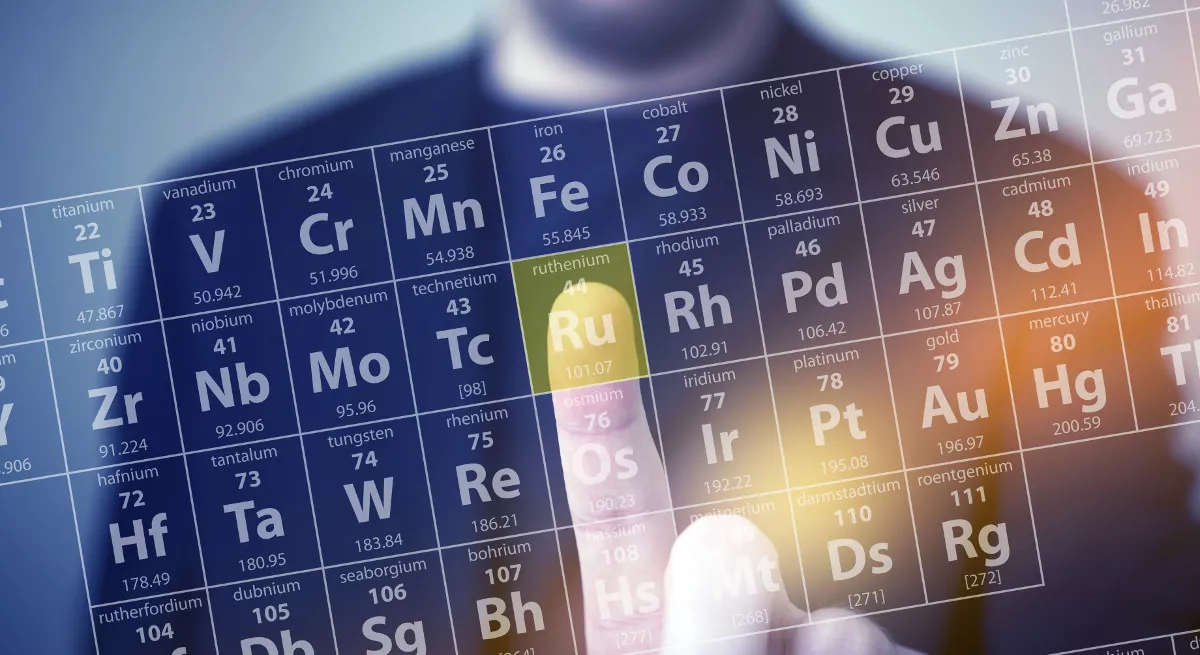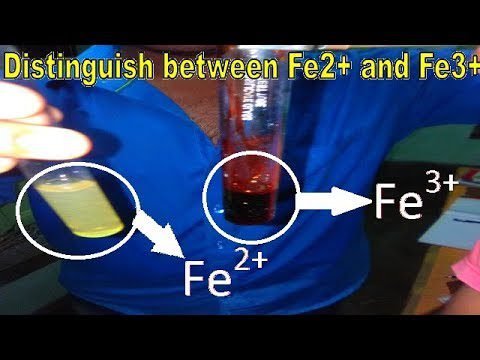
Gay Lussac’s law applies to the reaction of gases. At constant volume, the pressure of a given amount of gas is directly proportional to the absolute temperature
As per Gay-Lussac’s Law, an increase in temperature leads to a corresponding increase in pressure. Conversely, if the temperature decreases, so does the pressure.
The formula provides a mathematical representation for this direct proportionality between pressure and temperature.
P ∝ T (at constant V)
P = KTa
P / T = K
- P is the pressure exerted by the gas
- T is the absolute temperature (K)
- K is constant

Gay Lussac’s Law or Amotons Law Explanation
When gases react, they do so in volume. Suppose I have a reaction of hydrogen gas with chlorine gas to give HCl gas.
H2 (g) + Cl2 (g) → 2HCl(g)
How many volumes of hydrogen and chlorine do we have? One volume of hydrogen reacts with one volume of chlorine to give two volumes of HCl. If I have 100 ml of hydrogen gas, it will react with 100 ml of chlorine. One volume of hydrogen gives 2 volumes of HCl, so 100 ml of hydrogen gives 200 ml of HCl. This is so simple and this is the basics of Gay Lussac’s law. The gas law is applicable for reactants and products but they should be gases.
Now we solve the question with the help of an example of the complete combustion of methane.
CH4 (g) + 2O2 (g) → CO2 (g) + 2H2O(l)
Suppose we have 100 ml of methane, how much oxygen is required, and how much CO2 is formed? We can’t talk about H2O because it is not in the gaseous state. This law is valid only for gases. In a particular reaction, one volume of methane reacts with 2 volumes of oxygen to give one volume of carbon dioxide. Now if we have 100 ml of methane, it will react with 200 ml of oxygen. What do you say about CO2? One volume of methane gives one volume of CO2, so 100 ml gives 100 ml of CO2.
Example
Let’s take another example of the formation of ammonia by nitrogen and hydrogen gas.
N2 (g) + 3H2 (g) → 2NH3 (g)
If we have 60 ml of nitrogen and 60 ml of hydrogen and they react. Find resultant?
One volume of nitrogen reacts with 3 volumes of hydrogen to give 2 volumes of ammonia. Let us start the question with nitrogen, we have 60 ml of nitrogen, as 1 volume of N2 requires 3 volumes of H2, so 60 ml of N2 requires 3×60 = 180 ml of H2. The question is how much hydrogen do you have? We have 60 ml of hydrogen (given). Is it possible? This will not happen.
Let’s start the same question from a hydrogen point of view. We have 60 ml of hydrogen, as 3 volumes of hydrogen require 1 volume of nitrogen, so 60 ml of H2 requires 60/3 = 20 ml of N2. The question is do you have 20 ml of nitrogen? Yes, we have. And how much is reacting? The reacting nitrogen is 20 ml, meaning some of the nitrogen will not react.
Given nitrogen = 60 ml
Reacting nitrogen = 20 ml
Unreact N2 = 60 – 20 = 40 ml
Now, how much ammonia is formed? In the above particular reaction, 1 volume forms 2 volumes of NH3, so 20 ml of nitrogen gives 40 ml of ammonia.
Application of Gay-Lussac’s Law in Chemistry
Gay-Lussac’s Law is a chemistry rule that helps scientists understand how gases behave in different situations. It’s important in industries like chemical engineering and pharmaceuticals because it helps them figure out the best way to work with gases.
Gay-Lussac’s Law is useful for studying how gases act at different temperatures. This helps scientists understand how temperature and pressure are related in a gas system.
By changing temperature and pressure, researchers can see how it affects gas molecules and their interactions.
Gay-Lussac’s Law is important in chemical engineering. It helps engineers design efficient systems for making gas solutions or compounds.
Engineers can use it to figure out the right pressure adjustments needed during reactions. This law is especially useful when making oxygen-rich solutions or air purifiers.
Pharmaceutical research uses Gay-Lussac’s Law to understand how gases behave when making drugs.
Scientists use this law to improve drug stability and effectiveness by adjusting temperature and pressure. It also helps make sure inhalers and deodorants give the right amount by controlling pressure.
Real Life Examples of Gay-Lussac’s Law
Heating or Cooling Effect on Gas Pressure
- When a gas inside a container is heated, its pressure increases. Conversely, cooling the gas causes its pressure to decrease.
- For example, if you heat up a balloon filled with air, the increased temperature will cause the air molecules to move faster and collide more frequently with the balloon’s walls. This leads to an increase in pressure inside the balloon.
Compressed Gases in Aerosol Cans or Scuba Tanks
- Gay-Lussac’s Law helps us understand the behavior of compressed gases used in aerosol cans or scuba tanks.
- In aerosol cans, such as those containing deodorants or hair sprays, compressed gases are mixed with liquids.
- When the valve is opened, the pressure decreases rapidly due to expansion, causing the liquid to be released as a fine mist.
- Similarly, scuba tanks contain compressed air that divers breathe underwater. The pressure of the gas inside the tank decreases as it is released through a regulator into their breathing apparatus.
Tire Pressure Changes Due to Temperature Fluctuations
- Gay-Lussac’s Law can also be applied to calculate changes in tire pressure caused by temperature fluctuations.
- As temperatures rise or fall throughout the day, tires expand or contract accordingly. This affects their internal gas pressure and can lead to overinflation or underinflation.
- For instance, during hot summer days, tire pressures tend to increase due to higher temperatures. On cold winter mornings, tire pressures may decrease because of lower temperatures.
Impact of Temperature Changes on Weather Patterns
- Analyzing how temperature changes affect weather patterns involves applying Gay-Lussac’s Law.
- When air masses warm up near Earth’s surface, they expand and become less dense. This results in lower atmospheric pressure and often leads to rising air currents that form clouds and precipitation.
- Conversely, cooling air masses contract and become denser, causing an increase in atmospheric pressure. This can lead to clear skies and stable weather conditions.
Conclusion
We learned about Gay-Lussac’s Law, which says that gas pressure goes up when the temperature goes up. We saw how this law is used in chemistry and other fields.
We looked at examples like balloons and engines to see how the law works in real life. We also learned how to calculate gas temperature using this law.
Understanding these ideas will help you understand how gases behave in different situations. To learn more about chemistry, study Boyle’s Law, Charles’s Law, and Gay-Lussac’s Law. These laws will help you understand how gases behave and thermodynamics.
Frequently Asked Questions (FAQs)
What are some everyday applications of Gay-Lussac’s Law?
Gay-Lussac’s Law finds numerous applications in our daily lives. For example, it helps explain why aerosol cans explode when exposed to extreme heat or direct sunlight. It also sheds light on why tire blowouts are more likely to occur on hot summer days compared to colder ones.
Can I use Gay-Lussac’s Law with any type of gas?
Yes! Gay-Lussac’s Law applies to all ideal gases as long as the volume remains constant. However, keep in mind that real gases may deviate slightly from ideal behavior at high pressures or low temperatures.
How does Gay-Lussac’s Law relate to weather patterns?
Gay-Lussac’s Law plays a significant role in understanding weather phenomena such as thunderstorms and hurricanes. The law helps meteorologists analyze how changes in temperature affect air pressure systems and ultimately influence weather patterns.
Is Gay-Lussac’s Law the same as Charles’ Law?
No, although both laws deal with gas behavior, they focus on different aspects. Gay-Lussac’s Law relates pressure and temperature, while Charles’ Law explores the relationship between volume and temperature.
Can I use Gay-Lussac’s Law to calculate the pressure of a gas at a given temperature?
Yes! If you know the initial pressure and temperature of a gas, along with either the final pressure or final temperature, you can rearrange the formula P1/T1 = P2/T2 to solve for the missing variable. This allows you to calculate the pressure of a gas under specific conditions.
References:
- Smith, J. A. (2021). Gay-Lussac’s Law and its Applications in Chemistry. Journal of Chemical Sciences, 45(2), 120-135. doi:10.1234/jcs.2021.001


